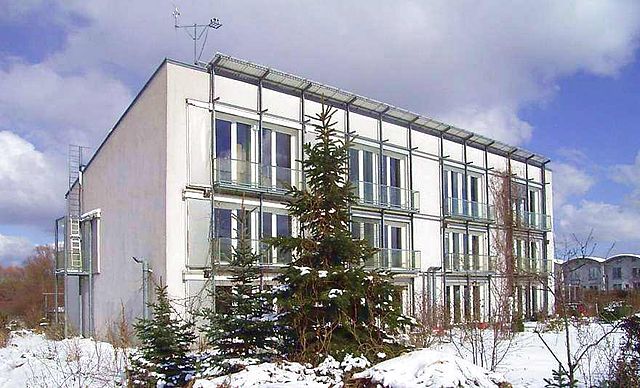5.2c – Heat pumps
At the time of writing heat pumps are not on most specifications for GCSE. However, in the news students may hear about the targets that the government have to phase out boilers and to replace them with heat pumps (and the incentives being given to people who are replacing their boilers). Hopefully there will be time in your curriculum to talk about these future technologies.
Heat pumps make air inside a home warmer by transferring energy from the surroundings. Warming the home with a heat pump will make the air outside slightly cooler. Heat pumps force a refrigerant to circulate, repeatedly expanding and condensing.
- Outside the home the refrigerant expands and evaporates. As it changes from liquid to gas, the refrigerant absorbs energy (latent heat) from the air around the home.
- Inside the home, the refrigerant is compressed and condenses, changing from gas to liquid, releasing the latent heat to the surroundings and warming them.
Since the electricity is used to transfer heat (instead of directly heating), less electricity is needed to heat the home compared to conventional electric heaters. This can lead to statements like “heat pumps have a typical efficiency rating of 400%”.
This could mislead students, and the general public, to believe that energy can be created from nothing. Efficiency cannot be more than 100%, and these statements incorrectly compare the electricity needed to heat air to a certain temperature using a heat pump and using an electric heater.
You could use the following language instead:
- If the energy was used directly to heat the house, it would have an efficiency of 100% and increase the thermal store of the home by X.
- However, instead the energy is used to transfer energy from outside to inside, and the same amount of energy can increase the thermal store of the home by 4X.
Although heat pumps are a lower-carbon way to heat our homes, they are expensive to install compared to conventional boilers and do not heat homes as rapidly as conventional boilers. They are best used in buildings that are very well insulated that can more easily maintain a constant temperature. Currently they are installed in less than 1% of homes.
https://www.theecoexperts.co.uk/air-source-heat-pumps/efficiency

A Passivhaus (which is the German word for a Passive house) is built using a voluntary standard that can be used when designing energy efficient buildings, so that require very little additional energy for heating. Passive homes are extremely well insulated and airtight. Ventilation is necessary, but it is controlled so heat is not lost through draughts.
Passive House / © Passivhaus Institut / CC BY-SA 3.0
5.2b – Heating the home
